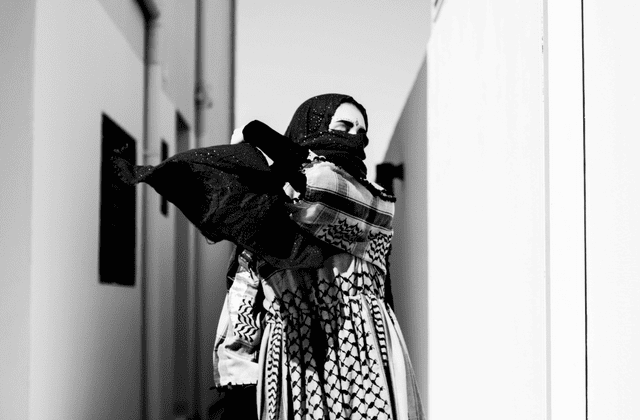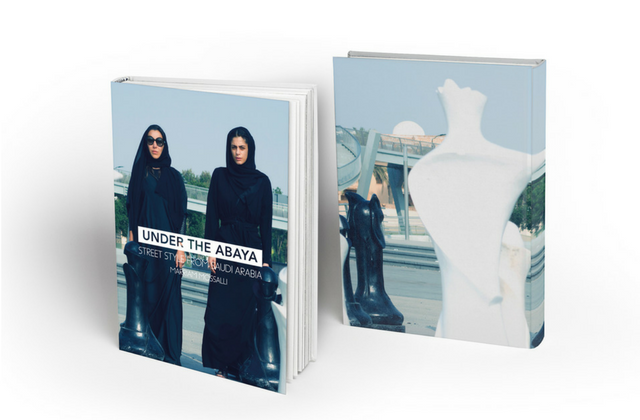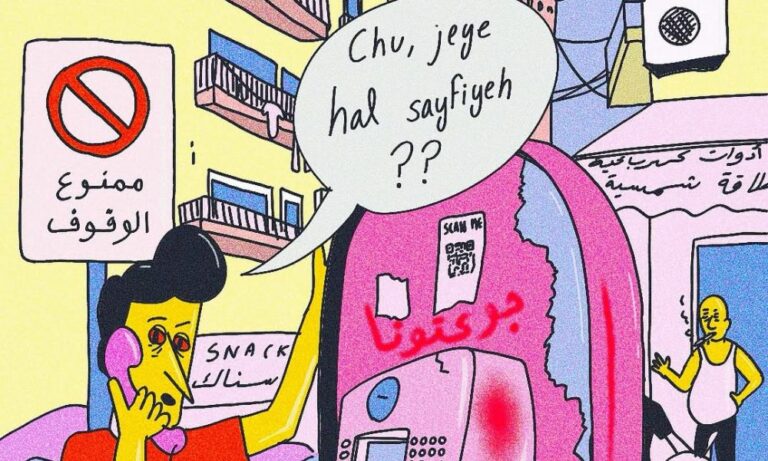Now in its fifth edition, Jeddah Arts (also known as 21,39) takes place through the months of February, March and April each year providing a platform to both regional and international artists to showcase their latest works.
This year, one of the most exciting revelations has come courtesy of Marriam Mossalli, an entrepreneur and the founder of Shoesanddrama.com. In partnership with Cadillac and Niche Arabia, Marriam has curated a book titled Under The Abaya: Street Style from Saudi Arabia.
Marriam has long been a voice for the women of Saudi in the international arena and the book aims to shine a light on the uniqueness of the Saudi woman, her inherent individualism and her unwavering cultural identity. It also seeks to present the abaya in a seldom explored light — a powerful garment worn by strong women.
The book was launched for the first time over the weekend at Athr Gallery and Buro 24/7 Middle East exclusively spoke with Marriam about the title and what she hopes it will show to the rest of the world.
Why did you decide to do the book? Why was it important for you to highlight the style of Saudi women?
I am a fashion editor and influencer, but before that I am just a Saudi woman and I think that this book is really about her. It’s about the woman who wears the clothes. It’s about her ambition, her dreams, and how she embodies this modern yet very traditional Khaleeji woman.
{insert gallery tpl=”slide-freesize.tpl” id=”Under the Abaya: Street Style from Saudi Arabia” rid=”5796″ order=”a_tstamp”}
With so much talk about the abaya in international news in the past year, was this book a way of celebrating the garment and the women who wear it?
Everyone who knows me knows that I have been always a champion of the abaya. I believe that it’s something to be proud of, as it’s one of our traditional vetements that has been around since before the 6th century. My goal has always been to elevate it to a place where it becomes a global silhouette much like the kimono from Japan or the kaftan from Morocco.
I definitely think there has been an evolution of the abaya since the 6th century. There was a poet who wrote about the woman in black and it created a trend that has lasted centuries turning it into what it is today: the abaya with different fabrics and colours that show abundant creativity and individualism. We are seeing people more willing to stand out rather than blend in and that’s something that is really demonstrative of Saudi women themselves. Now, we are not all about keeping the status quo and making sure that we don’t stick out in anyway — in fact it’s the opposite. We are motivating and encouraging each other to stand out and so is our country.
We are seeing people more willing to stand out rather than blend in and that’s something that is really demonstrative of Saudi women themselves. Now, we are not all about keeping the status quo and making sure that we don’t stick out in anyway — in fact it’s the opposite. We are motivating and encouraging each other to stand out and so is our country.
How would you describe the new generation of Saudi women?
I think the new generation of Saudi women is much like the older one but just younger: 70 per cent of our population is under the age of 30, making the majority of us millennials. I think the main difference is our use of social media, like Snapchat; we are seeing the trend of showcasing ourselves more on social media. When I first started this initiative, Under the Abaya, two years ago, it was met with some hesitation because some of the girls in different regions were more conservative and concerned about revealing their face.
So with this book, we had user-submitted images where we had the option to crop out the faces. But today, 80 per cent (if not more) of the submissions are telling us that it is okay to not crop their faces. There has been a great shift in minds — they are now proud to show who they are and what they do.
There’s so much positive news emerging from the Kingdom on a daily basis, what is the feeling amongst women in the Kingdom like in light of this?
I got asked by an interviewer in the UK about how difficult it was to be a Saudi female and I told her, “I don’t know, I just feel it’s difficult being a woman these days especially with what’s happening around the world,” as seen from movements such as #MeToo.
But one difference I will say, to clarify, is that being a Saudi woman, I am a bit more optimistic and I think that has a lot to do with the fact that everyone here in Saudi is championing and cheering for our success. I think that’s what is really interesting, being here on the ground in Saudi, being a Saudi woman, and experiencing that push.
Under the Abaya: Street Style from Saudi Arabia is now available for pre-order on Undertheabayaksa.com. Proceeds from the sale of the books will go towards Niche Studio’s Fashion Design Scholarship Fund which provides scholarships to financially-disadvantaged fashion students.
Now, read what Valerie Messika had to say about the way Middle Eastern women wear jewellery.





